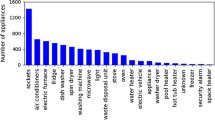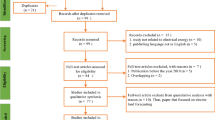Abstract
In the event of Single Day-Ahead Coupling being unavailable, fallback procedures are triggered. The main fallback procedure used for the allocation of cross-border-capacity in the day-ahead market timeframe is the explicit allocation in the form of physical transmission rights of electrical energy, also known as Shadow Auction.
According to the European Commission, any Single Day-Ahead Coupling fallback procedure should lead to an “efficient” way of allocating cross border electricity transmission capacity. Yet, the efficiency of the Shadow Auction as the main fallback procedure was questioned in the past considering its historical results. As a possible cause, legislation on remuneration of long-term transmission rights based on market spreads, was discussed within market participants.
ENTSO‑E conducted a study with the support of Technische Hochschule Ulm to assess the question whether remuneration of long-term transmission rights based on market spreads reduces incentives to allocate capacity in the Shadow Auction and, thus, reduces its efficiency. To assess economic incentives for market participants to take part in the Shadow Auction mechanism, a Cournot model was developed considering historical bid curves and cross-border transmission capacities. By using fundamental easy-to-access data, this study aims to produce understandable and interpretable results for this complex scenario.
The results show that market participants owning long-term transmission rights currently have at most reduced incentives to participate in Shadow Auctions compared to other market participants. In practice, this leads to a measurable loss of public welfare, suggesting that modifications are necessary. The study concludes by discussing proposals for possible changes.
Zusammenfassung
Für den Ausfall des Single Day-Ahead-Coupling (SDAC) wird als Backup-Verfahren die sogenannte Shadow Auction (SA) eingesetzt. Dabei wird zonenübergreifende Kapazität im Day-Ahead-Markt in Form von physischen Übertragungsrechten über explizite Auktionen vergeben.
Gemäß der Regulierung der Europäischen Union muss die Vergabe von zonenübergreifender Kapazität in einem Backup-Verfahren für das SDAC auf „effiziente“ Art erfolgen. In der Vergangenheit wurde jedoch die Effizienz der SA aufgrund historischer Ergebnisse vermehrt in Frage gestellt. Als mögliche Ursache wurde eine Regulierung der EU diskutiert, welche vorgibt, dass langfristige, zonenübergreifende Übertragungsrechte auf der Basis von Marktspreads vergütet werden müssen.
Auf Initiative der ENTSO‑E hin wurde mit Unterstützung der Technischen Hochschule Ulm eine Studie durchgeführt, die analysieren soll, ob die Vergütung von langfristigen Übertragungsrechten auf Grundlage von Marktspreads die Anreize für die Kapazitätsvergabe in den Shadow Auction tatsächlich verringert und somit deren Effizienz mindert. Um die ökonomischen Anreize der Marktteilnehmer zur Teilnahme an der Shadow Auction zu bewerten, wurde ein Cournot-Modell unter Verwendung historischer Gebotskurven und zonenübergreifender Übertragungskapazitäten entwickelt. Ziel der umsetzungsorientierten Studie ist es durch die Verwendung grundlegender, leicht zugänglicher Daten, verständliche und interpretierbare Ergebnisse für dieses komplexe Szenario zu präsentieren.
Die Ergebnisse zeigen, dass Marktteilnehmer, die langfristige Übertragungsrechte besitzen, derzeit im Vergleich zu anderen Marktteilnehmern zumindest verringerte Anreize haben an den Shadow Auctions teilzunehmen. In der Praxis führt dies zu einem messbaren Verlust an öffentlicher Wohlfahrt sodass regulatorische Änderungen gegeben sind. Verschieden Vorschläge zu entsprechenden Änderungen werden abschließend in der Studie diskutiert.












Similar content being viewed by others
Change history
13 December 2022
Abbreviatians were missing
Notes
The decoupling of the individual market areas e.g. due to an error in the bidding process. This results in auctions for the following day being held in each country individually.
Abbreviations
- ACER:
-
European Union Agency for the Cooperation of Energy Regulators
- ATC:
-
Available Transmission Capacity
- BZ:
-
Bidding Zone
- CWE:
-
Central Western Europe
- ENTSO‑E:
-
European Network of Transmission System Operators for Electricity
- EPEX:
-
European Power Exchange
- FTR:
-
Long Term Financial Transmission Rights
- HAR:
-
Harmonised Allocation Rules
- JAO:
-
Joint Allocation Office
- LTTR:
-
Long Term Transmission Rights
- NEMO:
-
Nominated Electricity Market Operators
- PTR:
-
Long Term Physical Transmission Rights
- SA:
-
Shadow Auction
- SAP:
-
Single Allocation Platform
- SDAC:
-
Single Day-Ahead Coupling
- TSO:
-
Transmission System Operator
- bze:
-
exporting Bidding zone
- bzi:
-
importing Bidding Zone
- cdscbz,ds :
-
cumulated demand segment capacities
- CDSCds :
-
cumulated segment bid-capacity
- CRDSCrds :
-
cumulated residual segment capacity
- csscbz,ss :
-
cumulated supply segment capacities
- CSSCss :
-
cumulated segment offer-capacity
- ds:
-
demand segments
- dscbz,ds :
-
capacity demand segment
- Pbze :
-
export prices
- Pbzi :
-
import prices
- PDSds :
-
constant bid price
- PRDSrds :
-
constant price of the segment
- PSSss :
-
constant offer price
- PTtr :
-
profit for a trader
- rds:
-
residual demand segments
- ss:
-
supply segments
- sscbz,ss :
-
capacity supply segment
- tr:
-
traders
- transcost:
-
risk margin
- xbbz,rds :
-
binary variable to select a RDS in each BZ
- xdsbz,ds :
-
non-negative variable demand segment
- xlttrtransbze,bzi :
-
LTTRs modelled cross-border flows
- xrdsbz,rds :
-
purchases for negative values and sales for positive values
- xssbz,ss :
-
non-negative variable supply segment
- xtrans:
-
cross-border trading quantities
- Y:
-
objective value profit
- Z:
-
objective value sum of supply and opportunity costs of unmet demand
References
ACER (2019) Establishing a single methodology for pricing intraday crosszonal capacity. https://documents.acer.europa.eu/Official_documents/Acts_of_the_Agency/Individual%20decisions/ACER%20Decision%2001-2019%20on%20intraday%20cross-zonal%20capacity%20pricing%20methodology.pdf. Accessed 6 July 2022
ACER (2021) Harmonised allocation rules for long-term transmission rights. https://extranet.acer.europa.eu/Official_documents/Acts_of_the_Agency/Individual%20decisions%20Annexes/ACER%20Decision%20No%2015-2021_Annexes/ACER%20Decision%2015-2021%20on%20the%20Harmonised%20Allocation%20Rules%20for%20Long-term%20Transmission%20Rights%20-%20Annex%20I.pdf. Accessed 6 July 2022
EC (2015) Establishing a guideline on capacity allocation and congestion management Article 44. https://eur-lex.europa.eu/legal-content/EN/TXT/?uri=CELEX%3A32015R1222. Accessed 10 Nov 2021
EC (2016) Establishing a guideline on forward capacity allocation. https://eur-lex.europa.eu/legal-content/EN/TXT/?uri=uriserv%3AOJ.L_.2016.259.01.0042.01.ENG. Accessed 10 Nov 2021
ENTSO‑E (2021) LTTR remuneration flaw. Workshop on mitigation actions, Friday April 23 2021, 9:00–15:00 (Resources not publicly available).
ENTSO‑E (2022) Single day-ahead coupling (SDAC). https://www.entsoe.eu/network_codes/cacm/implementation/sdac/. Accessed 14 July 2022
EPEX SPOT (2022) European market coupling. https://www.epexspot.com/en/marketcoupling. Accessed 14 July 2022
JAO (2018) Shadow allocation rules. https://www.jao.eu/sites/default/files/2021-06/Shadow%20Allocation%20Rules.pdf. Accessed 26 Oct 2021
JAO (2021) Auctions. Joint Allocation Office. https://www.jao.eu/auctions. Accessed 3 Dec 2021
Lundin E, Tangerås T (2017) Cournot competition in wholesale electricity markets: the nordic power exchange, Nord pool. https://www.ifn.se/media/ulndgmzi/wp1191.pdf. Accessed 26 Oct 2021
Müller C, Growitsch C, Wissner M (2011) Regulierung, Effizienz und das Anreizdilemma bei Investitionen in intelligente Netze. Z Energiewirtsch 35:159–171. https://doi.org/10.1007/s12398-011-0048-y
NEMO (2019) Aggregated Curves. All NEMOs Committee. https://www.nemo-committee.eu/aggregated_curves. Accessed 3 Dec 2021
Pepermans G, Willems B (2010) Cost recovery in congested electricity networks. Z Energiewirtsch 34:195–208. https://doi.org/10.1007/s12398-010-0021-1
Salant S (1982) Imperfect competition in the international energy market: a computerized Nash-Cournot model. https://mpra.ub.uni-muenchen.de/12021/1/MPRA_paper_12021.pdf. Accessed 26 Oct 2021
SDAC JSC (2021) SDAC report on the ‘partial decoupling’ incident of january 13th 2021—external version. https://www.nemo-committee.eu/assets/files/sdac-report-on-the-‘partial-decoupling’-incident-of-january-13th-2021-.pdf. Accessed 26 Oct 2021
Weber A, Graeber D, Semmig A (2010) Market coupling and the CWE project. Z Energiewirtsch 34(3):303–309
Willems B (2002) Modeling Cournot competition in an electricity market with transmission constraints. Energy J 23(3):95–125 (https://www.jstor.org/stable/41322965)
Wolak FA, Patrick R (2001) The impact of market rules and market structure on the price determination process in England and Wales electricity market. NBER working paper, vol 8248. NBER, Stanford, p 88
Author information
Authors and Affiliations
Corresponding author
Additional information
Data Availability
[dataset] JAO (2021) Auctions. Joint Allocation Office. https://www.jao.eu/auctions. Seen 03.12.2021.
[dataset] NEMO (2019) Aggregated Curves. All NEMOs Committee. https://www.nemo-committee.eu/aggregated_curves. Seen 03.12.2021.
Rights and permissions
About this article
Cite this article
Dierenbach, J., Holmer, D., Müller, D. et al. Assessment of the Shadow Auction Mechanism as a Fallback Procedure for Single Day-Ahead Coupling. Z Energiewirtsch 46, 231–244 (2022). https://doi.org/10.1007/s12398-022-00333-4
Published:
Issue Date:
DOI: https://doi.org/10.1007/s12398-022-00333-4




